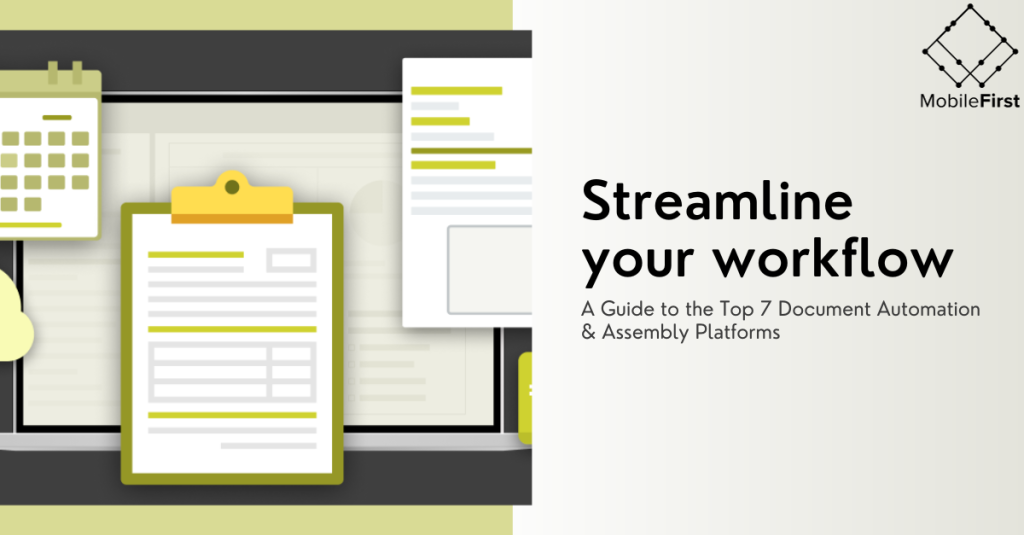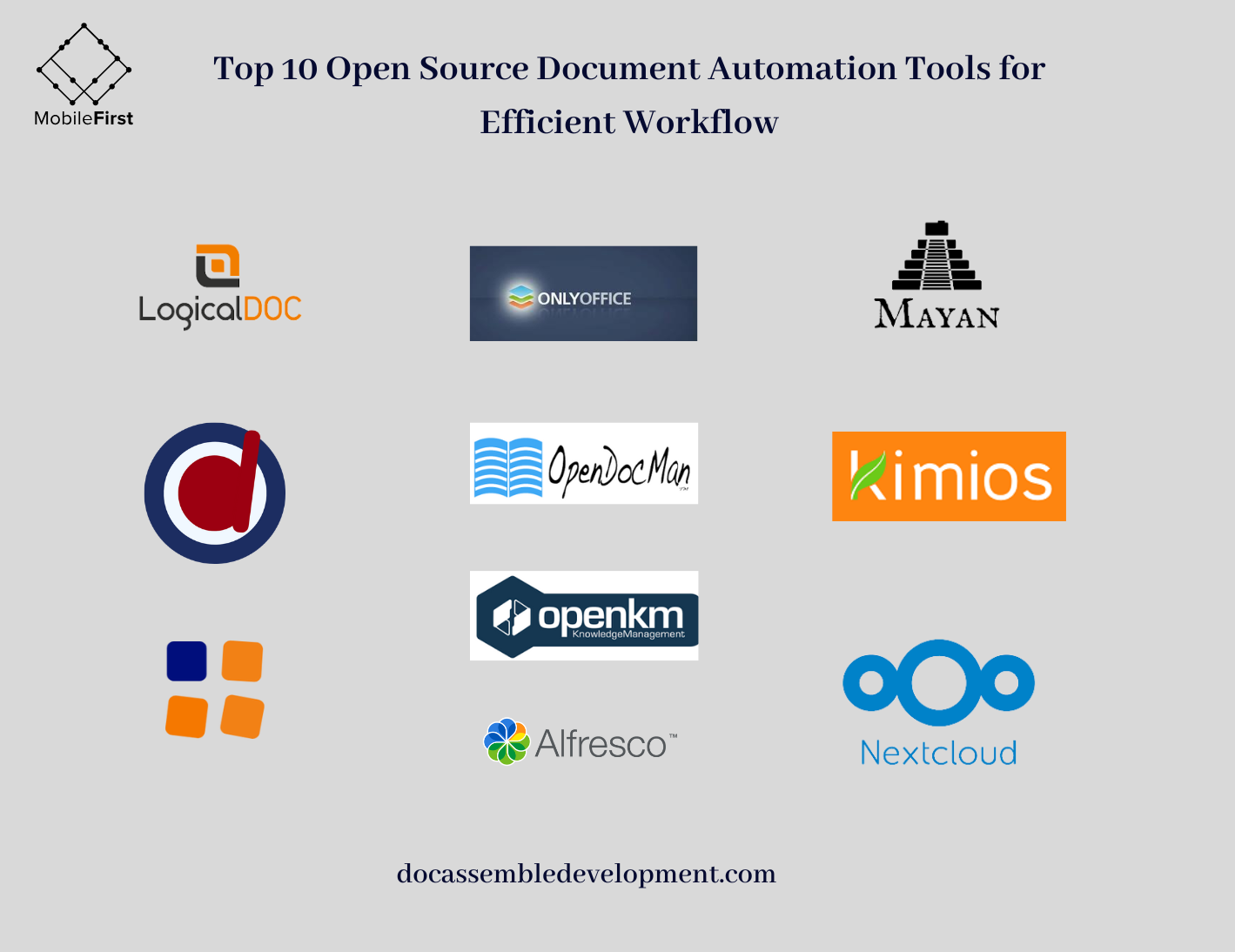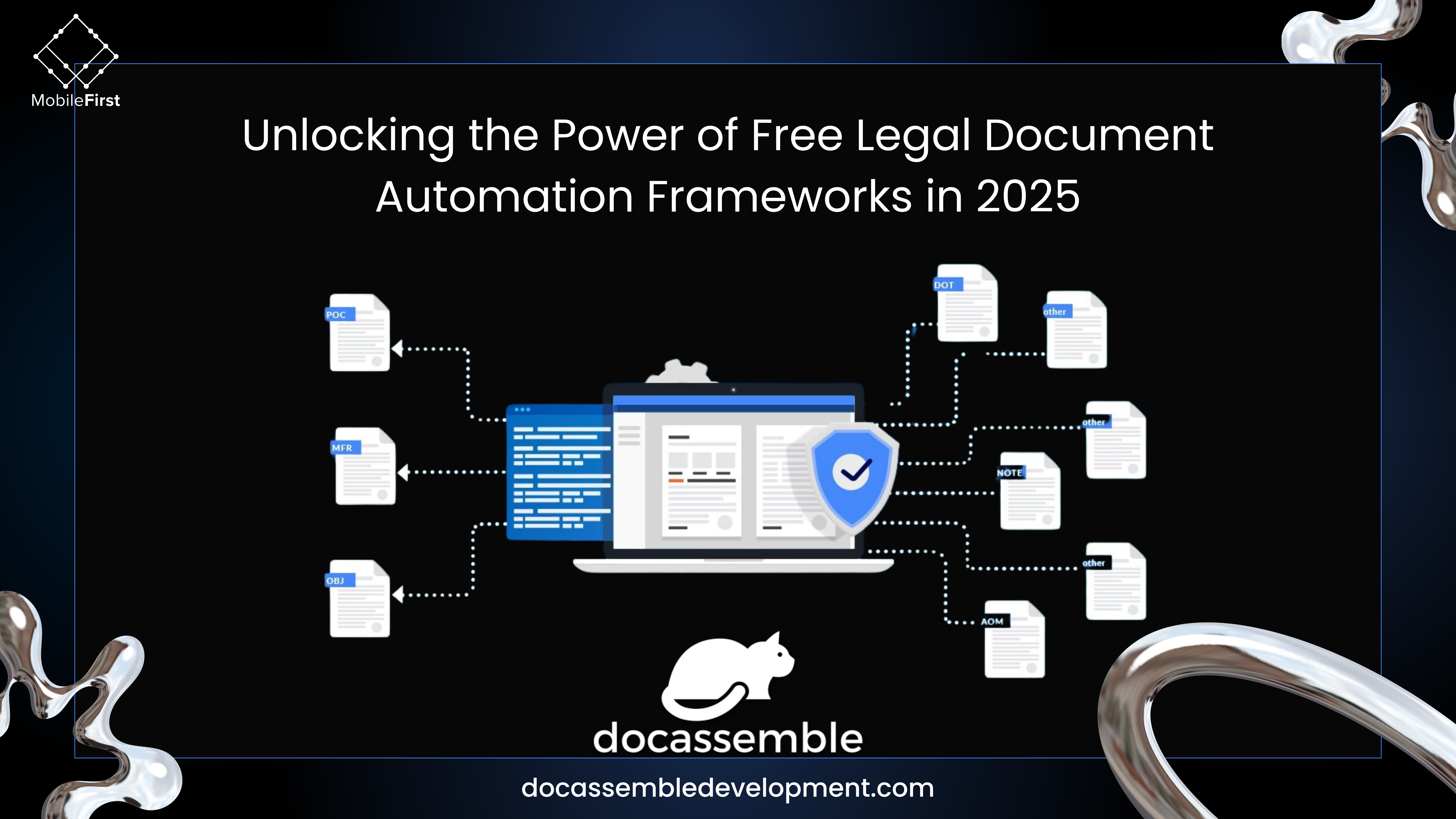
Streamline document automation and document assembly are fundamental processes that offer businesses opportunities to save time, reduce costs, enhance precision, and ensure compliance.
Document Automation entails the automated generation of documents by merging data from databases or spreadsheets into predefined templates. This versatile approach can be applied to craft various documents, including contracts, invoices, and correspondence.
On the other hand, Document Assembly represents a more specialized form of document automation primarily used for creating intricate documents, such as legal contracts. Document assembly platforms typically provide advanced features, such as the ability to implement conditional logic and track changes in documents.
The choice between document automation and document assembly platforms hinges on your specific needs. For straightforward documents, a document automation platform may suffice. However, for more intricate documents, particularly within legal or regulatory contexts, a document assembly platform offers a superior solution.
What are key considerations when selecting a document automation or assembly platform?
- Organizational Size and Complexity: The size and intricacy of your organization will influence the level of sophistication required from the platform.
- Budget Constraints: Your budget considerations will play a significant role in determining the most suitable platform for your organization.
- Unique Needs and Requirements: The specific demands and requisites of your organization should also guide your platform selection process.
Various Applications of Document Automation and Document Assembly Across Industries:
- Legal Sector: Document automation proves invaluable in the creation of legal documents, including contracts, wills, and trusts. This technology not only reduces the cost of legal services but also ensures the precision and compliance of documents with prevailing regulations.
- Financial Domain: In the financial sector, document automation finds its application in generating financial documents such as invoices, statements, and reports. This leads to increased efficiency and heightened accuracy within the financial department.
- Healthcare Industry: Document automation comes to the forefront in healthcare for crafting essential documents like patient records, billing statements, and insurance forms. This streamlines the efficiency of care delivery while guaranteeing the accuracy and security of patients’ records.
- Education Field: Document automation is a valuable tool for educational institutions, facilitating the creation of various administrative documents, including transcripts, diplomas, and enrollment forms. This enhances the efficiency of administrative processes and ensures the accuracy of student records.
Looking to integrate DocAssamble in your product?

Top 7 Document Automation & Document Assembly Platforms, along with their pros and cons:
1. HotDocs: HotDocs is a popular document automation platform that has been around for over 20 years. It is known for its ease of use and its ability to create complex documents. It also has a wide range of features, including the ability to integrate with other applications and to create templates.
Pros
- Easy to use
- Wide range of features
- Integration with other applications
- Scalable
Cons
- Can be expensive
- Not as user-friendly as some other platforms
- Can be slow for large documents
2. Docassemble: Docassemble is an open-source document automation platform that simplifies the creation of interviews, questionnaires, and forms that collect data from users and generate customized documents based on their responses. It is a powerful tool primarily used in the legal and business sectors but can be applied to various other fields.
Pros
- Free to use and customizable
- Flexibility
- Community Support
- Scalability
Cons
- Learning Curve
- Limited Official Technical Support
3. DocuSign: DocuSign is a popular electronic signature platform that also offers document automation capabilities. DocuSign is known for its ease of use and its ability to automate the signing process. It also has a wide range of features, including the ability to create templates, to track documents, and to collaborate with others.
Pros
- Easy to use
- Electronic signature capabilities
- Wide range of features
- Integration with other applications
Cons
- Can be expensive
- Not as user-friendly as some other platforms
- Not as powerful as some other document automation platforms
4. PandaDoc: PandaDoc is a cloud-based document automation platform that is known for its ease of use and its ability to create interactive documents. It also has a wide range of features, including the ability to create templates, to track documents, and to collaborate with others.
Pros
- Easy to use
- Interactive documents
- Wide range of features
- Cloud-based
Cons
- Not as powerful as some other document automation platforms
- Can be expensive for large businesses
5. ProntoForms: ProntoForms is a mobile-friendly document automation platform that is known for its ability to create forms that can be filled out on mobile devices. It also has a wide range of features, including the ability to create templates, to track documents, and to collaborate with others.
Pros
- Mobile-friendly
- Form creation
- Wide range of features
- Integration with other applications
Cons
- Not as user-friendly as some other platforms
- Can be expensive for large businesses
6. Formstack: Formstack is a cloud-based document automation platform that is known for its ability to create forms and surveys. It also has a wide range of features, including the ability to create templates, to track documents, and to collaborate with others.
Pros
- Form creation
- Survey creation
- Wide range of features
- Integration with other applications
Cons
- Not as user-friendly as some other platforms
- Can be expensive for large businesses
7. Zoho Creator: Zoho Creator is a cloud-based platform that allows users to create custom applications, including document automation applications. It is known for its flexibility and its ability to integrate with other Zoho applications.
Pros
- Flexible
- Integration with other Zoho applications
- Wide range of features
Cons
- Can be complex to set up
- Not as user-friendly as some other platforms
Looking to integrate DocAssamble in your product?
In the world of law, time is of the essence. Whether you’re a seasoned attorney juggling multiple cases, a legal aid advocate …
In today’s hyper-connected, fast-evolving digital landscape, businesses and individuals are constantly on the lookout for smarter, faster, and more efficient ways to …
Introduction The legal industry has long been associated with time-consuming processes, tedious paperwork, and high costs. However, with the rise of legal …

